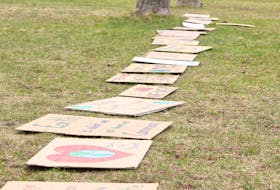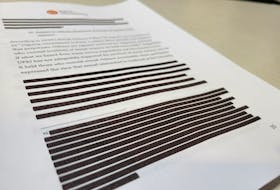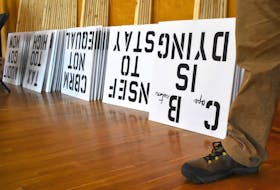Just when it seemed impossible that 2020, our annus horribilis, could get worse, it did.
The sinking of the Chief William Saulis, along with the apparent deaths of everyone on board, is another crippling body blow for this province, another test from above to see just how much woe a single place can stand.
Yet here is the thing — and I hope this will be received in the manner in which it is meant — it could have been worse. Way worse actually.
This is not my opinion. This is the view of 28 historians from prestigious universities across the United States and the United Kingdom asked by Bloom, the New York city-based makers of a digital self-therapy app, to pick the worst year in which to walk the Earth.
Two of the big thinkers, it turned out, felt that year was 2020 with its mix of the pandemic, causing over a million deaths worldwide, combined with its accompanying economic and social disruptions.
In that regard, we got off easy in these 12 months in which a combination of leadership, and we’re-all-in-it-togetherness kept the plague at bay.
Even if we hadn’t, even if COVID-19 had ravaged Atlantic Canada the way it raged through the rest of the country, there may be the faintest solace in knowing that at least we were not, say, peasants in the Italian city of Florence in 1348, by consensus the most miserable 12 months in history according to Bloom’s blue-ribbon panel.
That year marked the peak of the Black Death which killed a third of the population of Europe and the Middle East, including 90 per cent of the residents of Florence, and, to give another example, a reported 66 per cent of the population of the French town of Caux in Normandy.
Now, I am not privy to the methodology of the historians whose opinions Bloom sought out on these matters. But I fully accept their view that 1944 — with the horror of the Holocaust underway, and Europe engulfed in flames — was the next worst time to be alive on planet Earth.
To my embarrassment, I knew almost nothing about the events of 1816, The Year Without A Summer, even though a huge volcanic eruption in Indonesia blocked out the sun, causing devastating crop failures in Europe, China and North America.
But millions starved and died that year, as they did in 1644, the year which comes in fourth in the panel’s scale of woe.
Would any one of us have wanted, for example, to be some German foot soldier that year slogging through the European muck as the Thirty Years’ War, which took as many as eight million lives, peaked. Or, also in 1644, to have the life of a subsistence farmer caught on the wrong side of the warring factions as China’s Ming Dynasty collapsed, causing countless millions of deaths.
Bloom’s historical panel says that one-two punch is enough to put 1644 above 2020 in their table of despair.
Of course, there is an arbitrary quality to this ranking, or there would be no way of explaining, for example, the exclusion of a year during the Spanish Flu epidemic which claimed an estimated 50 million lives.
Geographical context is also important on questions like this.
As a Chronicle Herald colleague pointed out on Friday, a Canadian born in 1900 — like, in other words, many of our grandparents — would have been 14 when this country entered the First World War, 18 when the Spanish Flu epidemic hit, and 29 years old when the stock market collapsed — which, FYI, is number 2 on the panel’s ranking of the worst years for the United States, behind only 1862, the darkest year in the American Civil War.
From the skies of Nova Scotia, Happy Holidays, Merry Christmas and a Happy New Year to everyone. Keep the flame lit...Blue skies ahead. pic.twitter.com/rTsvbLUkMo
— Dimitri Neonakis (@DimitriNeonakis) December 16, 2020
I bring this up because that is a lot of misery for three decades of life. A second world war, the dawn of the nuclear age and a few other stress-inducing events would follow.
Yet, the people from that generation I met got up and dusted themselves off. They endured. This thought I choose to take with me into the year ahead.
I choose, in the literally and figuratively darkest days of the year, to picture Dimitri Neonakis, the Dartmouth businessman and aviator who, since last April, has taken to the skies and traced images of hope when times seemed the bleakest.
This week, if you looked closely you would have seen him up there again, in his SR Cirrus 22 four-seater, on a flight path which, from the right angle looked like a Christmas candle.
“To remember those we lost in 2020,” he said when I asked what it meant, “and to light the way ahead in the fresh new year.”









